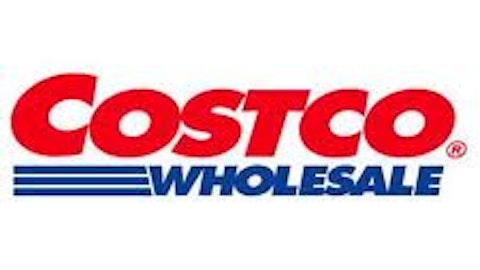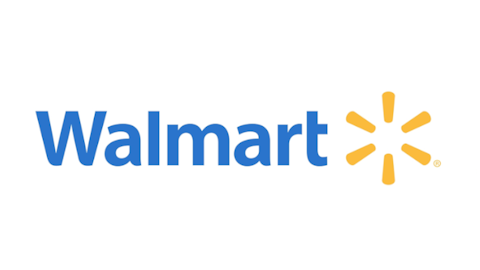Macy’s, Inc. (NYSE:M) is quite the resilient apparel retailer. Part of its industry out-performance is related to the company’s affluent customer base. Generally, the income level for Macy’s customers is above that of many other department stores. Even still, one investor’s fear for Macy’s is that same-store sales will eventually have to slow, after growing nearly 5% yearly since 2010.
But never fear, the company continues to reinvest in its brand, including introducing active apparel via an alliance with Finish Line Inc (NASDAQ:FINL). Also, Macy’s is looking to focus on its omni-channel, which should help avoid markdowns, increase inventory turnover, and increase sales follow-through.
Thanks to Macy’s, Inc. (NYSE:M) continued strong earnings performance and growth in comp sales, the retailer has managed to outperform some of the other major department retailers over the past five years. Also, notice how it’s Macy’s and Nordstrom, Inc. (NYSE:JWN), the higher-end retailers, that have held up much better than either Kohl’s Corporation (NYSE:KSS) and Saks Inc (NYSE:SKS).
Macy’s also pays a sometimes overlooked 2% dividend yield that’s only a 30% payout of earnings. The retailer was impressive at generating and utilizing cash flow throughout the recession. Macy’s managed to de-leverage its balance sheet from a debt-to-EBITDA ratio of 4.0 in fiscal 2008 to 2.4 in 2012.
Also, during fiscal 1Q 2013, Macy’s, Inc. (NYSE:M) upped its quarterly dividend by 25% and increased its share-repurchase authorization by $1.5 billion. Since mid-2011, Macy’s has repurchased some 60 million shares worth $2.2 billion.
Higher-end retail
Nordstrom, Inc. (NYSE:JWN), in some cases considered even higher-end than Macy’s, is expected to experience revenue growth of 5.8% in fiscal 2013 driven by an impressive 4.4% growth in same-store sales. Nordstrom managed to post 1Q EPS of $0.73, not a stellar improvement from the $0.70 in the same quarter last year. However, this did come on the back of 4.8% higher total sales.
Going forward, Nordstrom is hoping that store openings will drive revenue. Nordstrom plans to nearly double its opening of new Rack stores from the current 125 stores to more than 230 locations by 2016. As well, the retailer has plans to break into New York and the Canadian markets.
One of the areas that Nordstrom, Inc. (NYSE:JWN) should be helped is its credit-card business performance. Nordstrom, Inc. (NYSE:JWN) manages its credit-card business in-house, and as a result has days of sales outstanding for receivables at 60.9, while Macy’s is only 3.7. An improving economy should help Nordstrom better collect and manage credit-card receivables.
Discount department retail
Where I like Macy’s, Inc. (NYSE:M) for the high-end sector and Nordstrom, Inc. (NYSE:JWN) for the ultra high-end, I think the discount department store sector is a bit too crowded. This includes Kohl’s, another major department store offering apparel, footwear and accessories for women, men and children. The company also offers soft home products, such as sheets and pillows, in addition to housewares.
Kohl’s is expected to still see interim pressures due to competitive pressures, which are expected to pull same-store sales down 1%. Kohl’s blamed its recent poor earnings performance on “unseasonable” weather, but I believe the pressures will continue for this retailer. As well, margins are likely to be compressed due to clearance markdowns.
The competition headwind for Kohl’s includes other major discount retailers, including The TJX Companies, Inc. (NYSE:TJX) and Ross Stores, Inc. (NASDAQ:ROST). But Kohl’s also competes with apparel retailer The Gap Inc. (NYSE:GPS), and where Kohl’s saw same-store sales down 1% year-over-year during 1Q, TJX saw a 1% gain, Ross a 3% gain and Old Navy a 3% gain.
Saks, another department-store retailer, offers apparel, shoes, accessories, jewelry, cosmetics, and gifts. Saks is more of a niche retailer and analysts expect revenue to increase 3.6% in fiscal 2014 on the back of comp sales growth of 5.4%.
Part of the comp sales growth will be helped by the expected sell-off of under-performing locations. The Wall Street Journal also reported earlier this year that Saks hired Goldman Sachs Group, Inc. (NYSE:GS) to explore strategic options, including a possible sale of the company.
Hedge fund trade
Going into second quarter, there were a total of 39 hedge funds bullish on Macy’s, Inc. (NYSE:M), which is some of the most robust hedge fund interest in the department retail sector. Lee Ainslie’s Maverick Capital had the largest position in the stock, worth close to $276 million, accounting for 3.6% of its total 13F portfolio (check out Maverick’s newest picks).
As for Saks, there were a mere 13 hedge funds long Saks, but still an 8% increase from the prior quarter. Mason Hawkins’ Southeastern Asset Management has the most valuable position in Saks, worth $296 million (see Southeastern’s portfolio).
At the end of of the first quarter, a total of 23 hedge funds were long Kohl’s. However, this is a 36% decrease from one quarter earlier. Anthony Bozza’s Lakewood Capital has the most valuable position in the stock, accounting for 2.4% of its total 13F portfolio (check out Lakewood’s top stocks).
Bottom line
Macy’s, Inc. (NYSE:M) appears to be in great shape, with its customer base being less sensitive to the weak economy. As a result, Macy’s does deserve a premium valuation to other department stores, yet, I don’t feel Macy’s should trade at a discount to Nordstrom, Inc. (NYSE:JWN). Macy’s trades at 0.7 times sales, while Nordstrom is at 1.0 times. Given its valuation and growth initiatives, I think Macy’s is a solid buy.
Marshall Hargrave has no position in any stocks mentioned. The Motley Fool has no position in any of the stocks mentioned.
The article How High-End Retail Outshines Discounters originally appeared on Fool.com.
Copyright © 1995 – 2013 The Motley Fool, LLC. All rights reserved. The Motley Fool has a disclosure policy.






